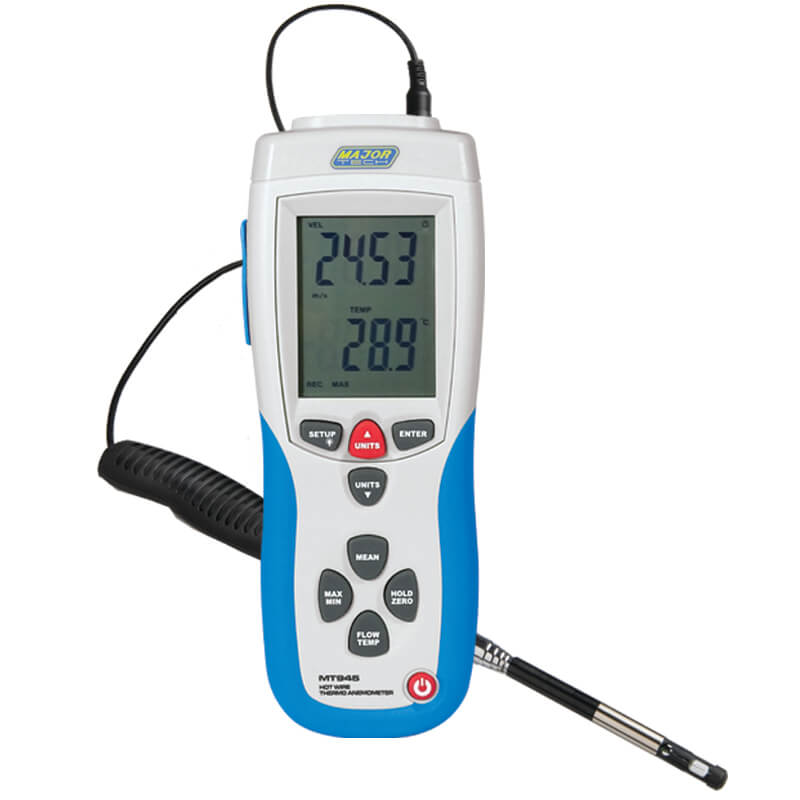Understanding Different Sorts Of Anemometers for Various Applications
Understanding Different Sorts Of Anemometers for Various Applications
Blog Article
Anemometers Introduced: Recognizing Their Importance in Environmental Surveillance and Precaution
The function of anemometers in ecological tracking and safety and security steps is commonly ignored, yet their significance is obvious. From meteorology to aviation safety, anemometers play a vital duty in supplying accurate information that notifies decision-making processes and boosts general safety.
History of Anemometers
The advancement of anemometers can be mapped back to the old worlds where simple wind determining devices were initial used. These very early wind dimension devices laid the foundation for the advancement of much more innovative anemometers over time. One of the earliest recognized anemometers was the hemispherical cup anemometer created by Leon Battista Alberti in the 15th century. This layout consisted of 4 hemispherical cups that collected wind power, supplying a dimension of its intensity based upon the speed of rotation.
Over the years, advancements in technology led to the development of more modern anemometers, consisting of ultrasonic anemometers and laser Doppler anemometers, offering boosted accuracy and efficiency in determining wind speed and instructions. The background of anemometers showcases a remarkable journey of technology and progress in the field of meteorology.
Kinds Of Anemometers
Throughout the area of weather forecasting, different kinds of anemometers have actually been developed to accurately gauge wind speed and direction. The most typical kind is the mug anemometer, which includes three or four mugs installed on horizontal arms that revolve with the wind. As the mugs spin, the speed at which they turn is straight proportional to the wind rate. Another commonly made use of type is the vane anemometer, which features a tail or fin that straightens itself with the wind instructions. This placement allows the gadget to figure out the wind instructions. Sonic anemometers utilize ultrasonic signals to measure wind speed and direction precisely. They are commonly made use of in study applications because of their high accuracy. Hot-wire anemometers run based on the principle that the cooling result of wind on a warmed cord is proportional to the wind speed. These anemometers appropriate for gauging low wind rates with high precision. Each kind of anemometer has its toughness and is chosen based upon the particular requirements of the tracking task handy.
Applications in Weather Forecasting
Having discussed the various sorts of anemometers utilized in meteorology for determining wind speed and instructions, it is vital to explore their practical applications in the area. Anemometers play an essential function in meteorology by giving precise and real-time data on wind conditions (anemometer). Meteorologists utilize anemometers to monitor wind speed and instructions to anticipate weather condition patterns, concern warnings for serious climate occasions like tornados, cyclones, and twisters, and evaluate weather for aviation safety and security
In weather forecasting, anemometers assist in understanding local and local wind patterns, which are important for anticipating weather condition changes and identifying weather patterns. These devices are also made use of in research study to study microclimates, urban warmth islands, and air contamination diffusion. Additionally, anemometers are employed in agriculture to maximize plant administration techniques, such as watering and chemical application, based upon wind problems.
Importance in Aeronautics Safety
An integral element of making sure aviation security lies in the careful monitoring of wind problems using anemometers. Anemometers play a vital role in air travel by offering real-time information on wind rate and instructions, assisting pilots website here in making notified choices throughout trip, touchdown, and liftoff. Unpredictable and solid winds can dramatically impact aircraft procedures, making it important for aeronautics authorities to depend on exact wind dimensions to make sure the safety and security of travelers and staff.

In the vibrant environment of air travel, where also small changes in wind rate and direction can have extensive impacts, anemometers stand as crucial tools for promoting safe and secure flight.
Function in Environmental Study
Just how do anemometers contribute to improvements in ecological research study? Anemometers play a vital role in ecological research study by providing essential linked here data on wind rate and direction. This details is vital for comprehending numerous climatic procedures, such as air contamination diffusion, weather patterns, and climate modification. By accurately measuring wind features, anemometers assist researchers assess the activity of toxins in the air, analyze the effect of industrial discharges, and anticipate the spread of pollutants in the environment.


Conclusion
In verdict, anemometers have played an important role in environmental surveillance and safety and security procedures. Recognizing the value of anemometers is essential for accurately measuring wind rate and instructions, which is crucial for predicting weather patterns, ensuring risk-free aeronautics procedures, and performing environmental studies.
One of the earliest recognized anemometers was the hemispherical cup anemometer invented by Leon Battista Alberti in the 15th century. Over the years, improvements in technology led to the development of more modern anemometers, including ultrasonic anemometers and laser Doppler anemometers, supplying boosted precision and effectiveness in determining wind speed and direction. Hot-wire anemometers run based on the principle that the cooling impact of wind on a heated cord is proportional to the wind speed. Meteorologists use anemometers to monitor wind rate and instructions to anticipate weather patterns, problem warnings for serious weather condition events like cyclones, storms, and twisters, and analyze atmospheric problems for aviation safety and security.
Comprehending the relevance of anemometers is crucial for properly determining wind speed and direction, which is vital for predicting weather patterns, making sure safe aviation operations, and conducting environmental researches. (anemometer)
Report this page